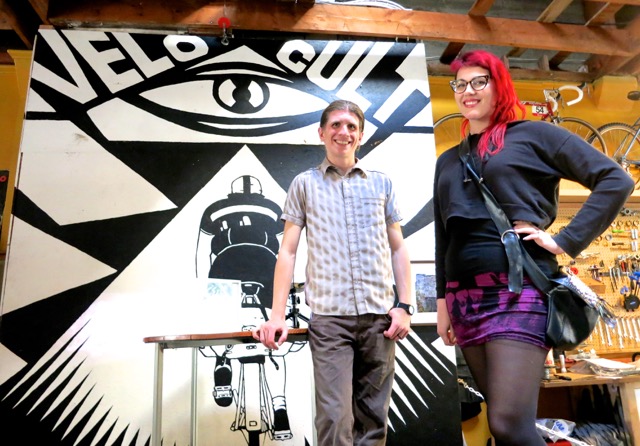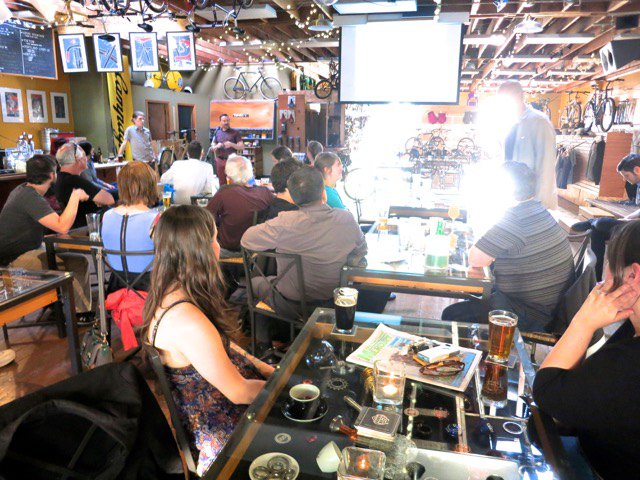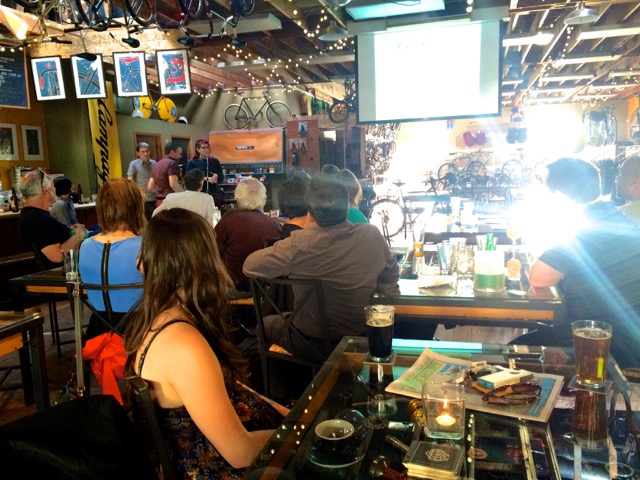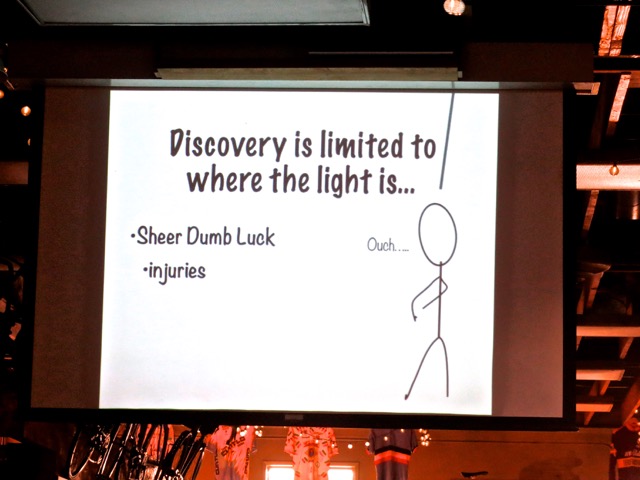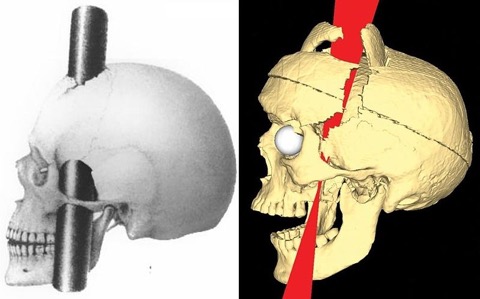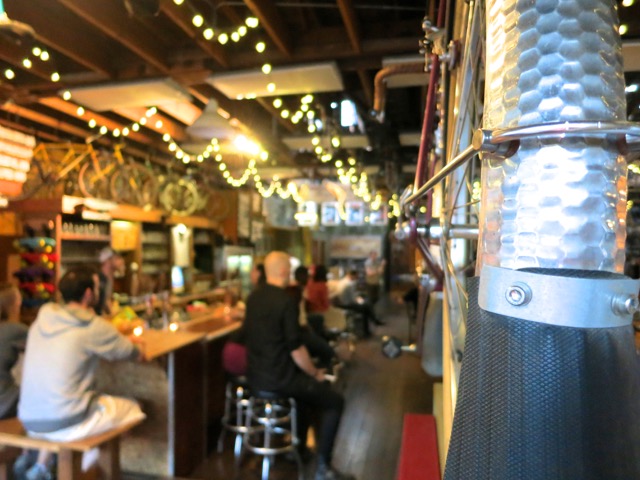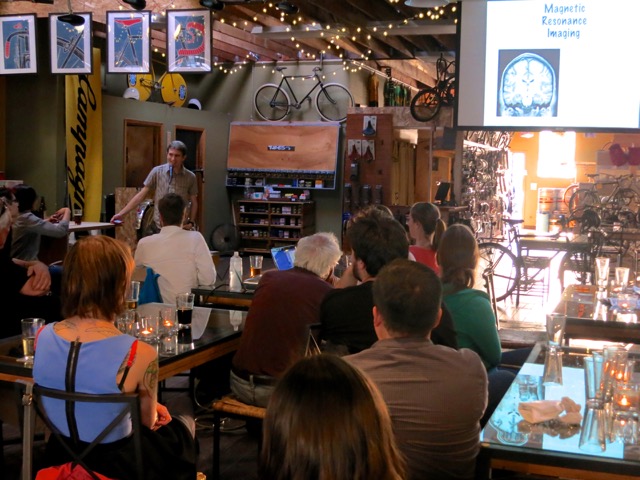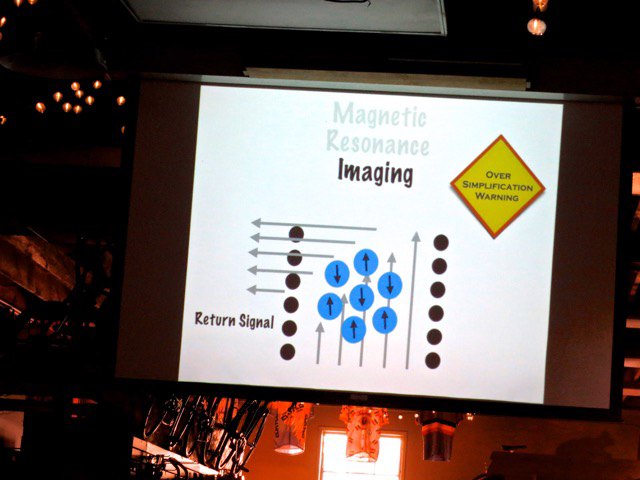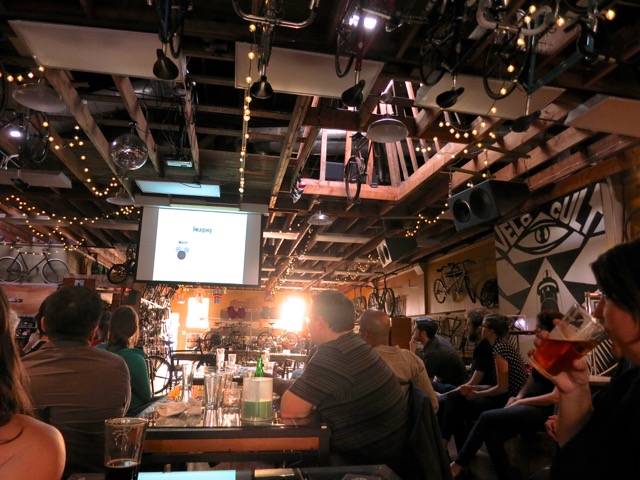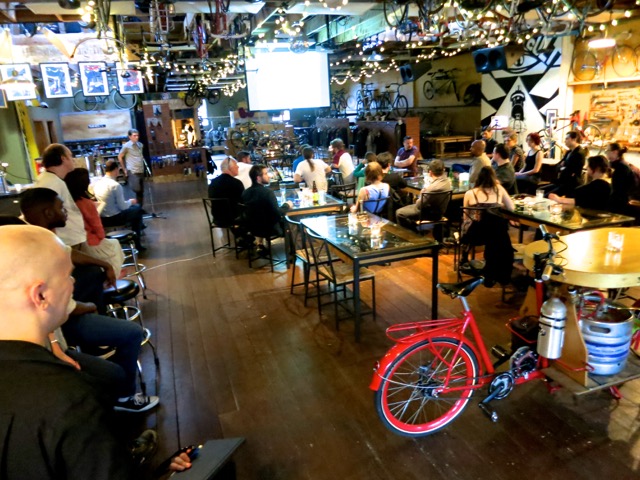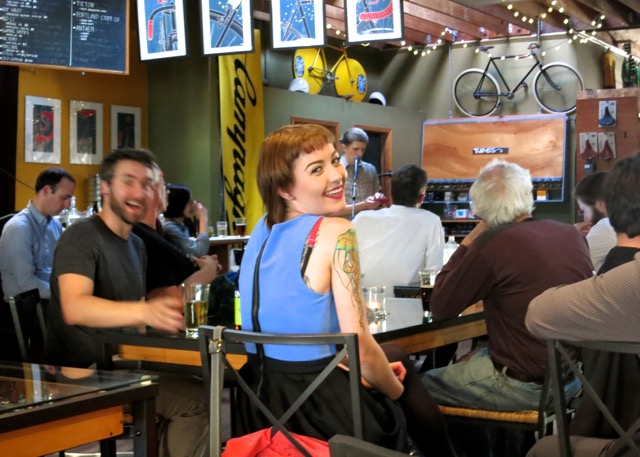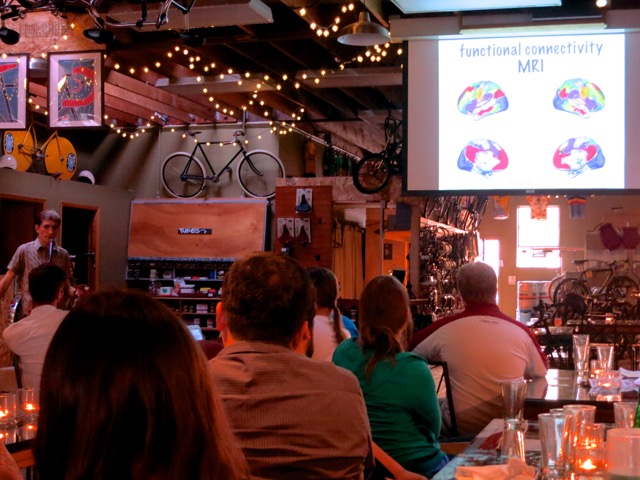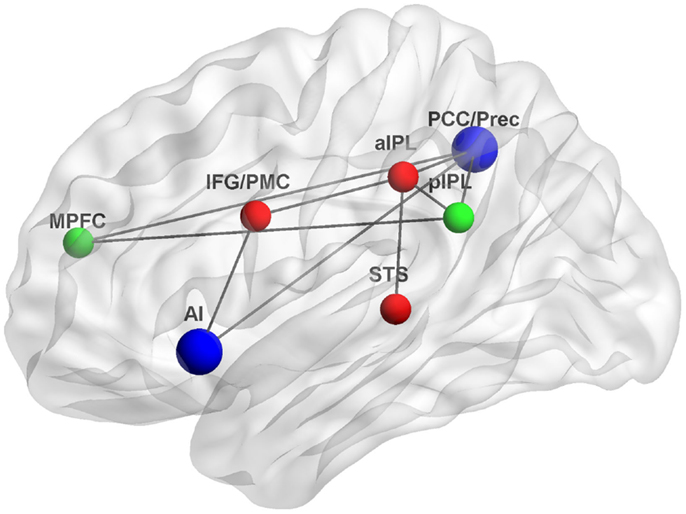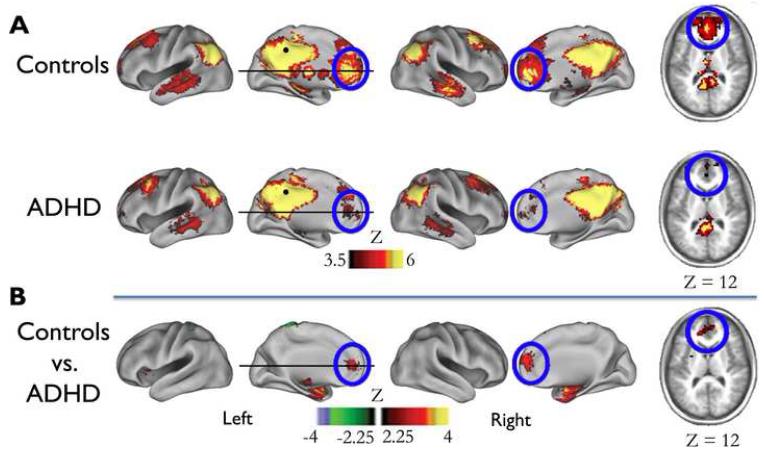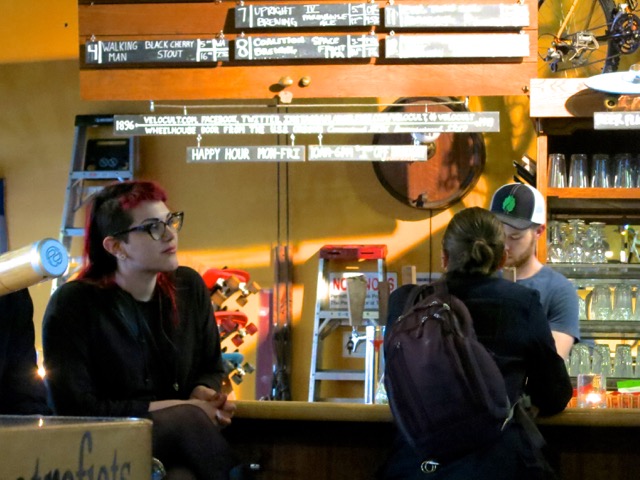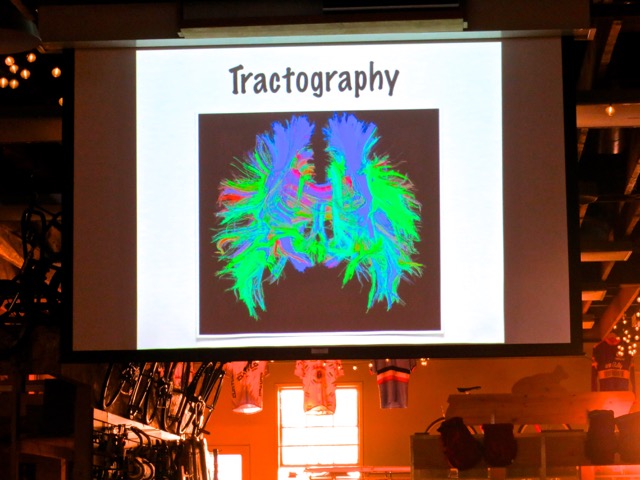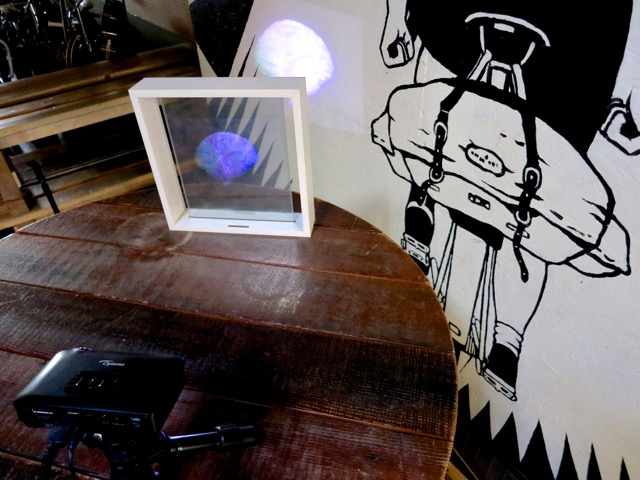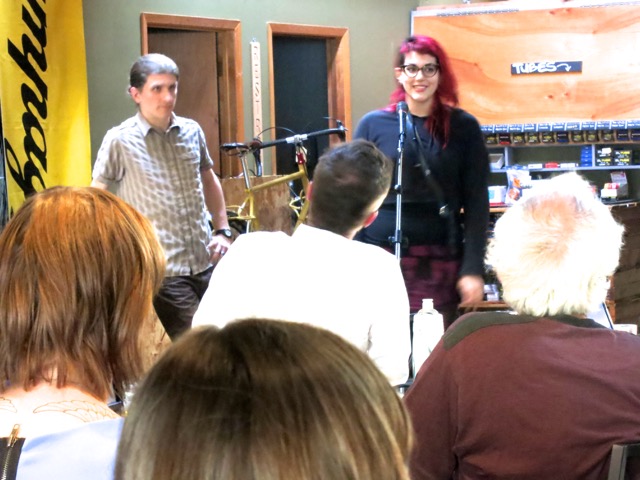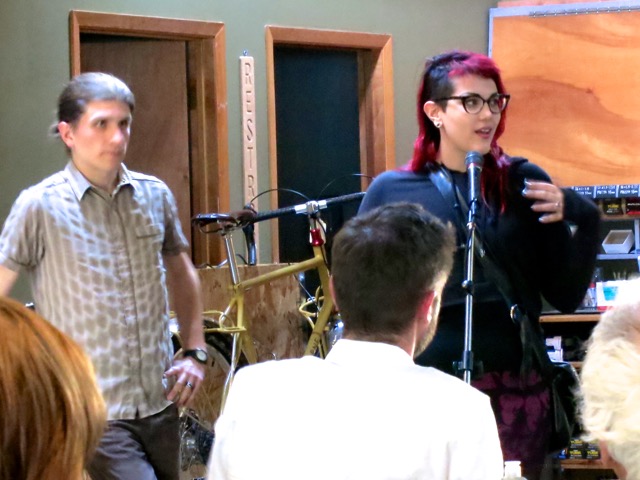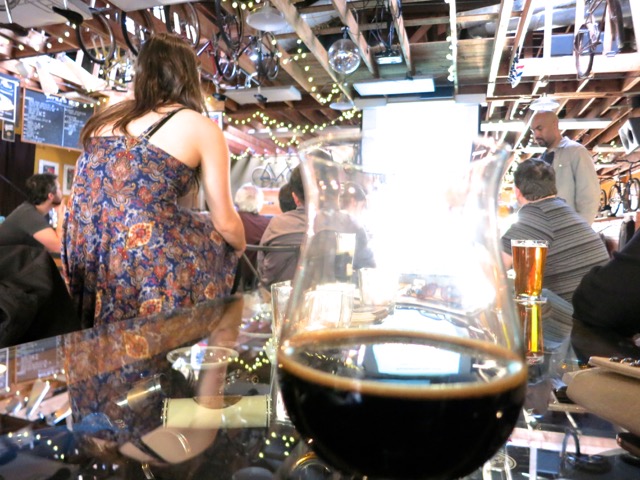Sam Carpenter, from the Fair Neuroimaging Lab at OHSU, along with Kathryn McAnalley from PNCA, artfully informed and entertained a crowd of bike, brain and beer aficionados in Northeast Portland on a sunny Thursday night…
They talked of images, and brains, and how what we know and can learn about the relationship between cerebral structure and function is both dependent on, and limited by, the technologies we have available…
As Sam explained, “discovery is limited to where the light is…”
Before the advent of modern techniques like magnetic resonance imaging (MRI), if you wanted to acquire understanding of which brain regions or networks were involved in which cognitive or perceptual functions, you often relied on studying individuals who had suffered a terrible injury, from tumor, trauma, or stroke…
Sam (a big fan of comic artist Randall Munroe) brought up the famous story of Phineas Gage, the railroad construction foreman in New Hampshire who, on one fateful day in 1848, tamped down an apparently improper mixture of blasting powder and sand, which sparked and ignited, driving the iron rod right through his medial frontal lobes!
Gage survived, but was “no longer Gage,” and experienced difficulty with decision making, the inhibition of inappropriate behavior, planning, and meeting work and social obligations. The case offered clues to the cognitive functions dependent on networks in the frontal lobes, but was certainly a crude and awful way to gain knowledge…
Sam walked the crowd carefully through the physics that underlie structural MRI, which typically relies on the magnetic properties of hydrogen ions held tightly along powerful magnetic field lines, which are then perturbed by a pulse of radio waves…
Sam included helpful “oversimplification warnings” on some slides, but did explain how a subsequent re-establishment of the powerful magnetic field would quickly snap the spinning hydrogen ions back into alignment, disrupting the field, and generating a “return signal” detectable by the MRI machine…
Since brain areas differ in their density of hydrogen ions, grayscale values can be applied, depending on the return signal, and rather striking, accurate images of living human brains can be produced…
Gray matter, for example, which consists of neuron cell bodies, dendrites, axon terminals, and the chemical synapses they form, differs significantly in hydrogen content from white matter, the insulated axon “wires” that conduct currents between areas of gray matter…
Sam explained that by focusing the machine on the magnetic properties of hemoglobin, instead of hydrogen, researchers can indirectly acquire information about actual brain activity, using a technique known as functional MRI (fMRI)…
When brain areas increase activity (i.e., when more neurons fire), during specific cognitive or perceptual tasks, there is a subsequent, transient, increase in blood flow to these areas, and more oxygen-carrying (or oxygenated) hemoglobin will arrive…
Deoxygenated hemoglobin, because of its molecular shape, is paramagnetic, or responsive to magnetic fields, while oxygenated hemoglobin, due its different structural form, is not (it is, instead, diamagnetic). So the change in this blood oxygen level dependent MR signal (or BOLD signal) can index recent neural activity in particular brain areas…
Sam explained how even “noise” in the MR signal can be correlated with similar changes in other areas of the brain, and by tracking these correlated fluctuations, distributed networks critical for psychological functions can be revealed!
This technique is called resting state functional connectivity MRI, and has led to fascinating work on networks involved in many aspects of cognition, including rumination and self-reflection. The Fair lab is very interested in developmental changes in this network (known as the default network) during childhood and adolescence, in those with, and without, diagnoses of attention deficit hyperactivity disorder (ADHD), and autism…
Front. Hum. Neurosci., 11 September 2013 | doi: 10.3389/fnhum.2013.00571
Pivoting from functional imaging back to structural, Sam next introduced his beer drinking audience to diffusion tensor imaging, which trains MR detection on magnetic properties of water, and how restricted its physical movement appears to be. The more restricted its movement, the more likely it is confined within an axonal wire….
This permits the tracing of white matter tracts, which physically link and convey information-rich electrical messages among distributed regions of gray matter, and which help form our functional brain networks, including the default network…
This tractography produces stunning color images of the wiring within our own brains, and changes in the structural wiring, functional connectivity, and actual behavior across development, and in disease states, can now be studied…
Kathryn McAnalley, using publicly available tractography data from the Human Connectome Project, created a compelling, holographic brain projection, that attracted a lot of attention..!
She introduced her work to a fascinated crowd…
Kathryn’s work needs to be seen to be appreciated. There may be more chances to view her 3D brain in public spaces, perhaps at the Portland Art Museum later this month..! But in the meantime, please click on the link below for a short video introduction…
Many thanks to our enthusiastic presenters, and to Velo Cult for their unwavering support for science and art education (along with fine bikes and brews 



